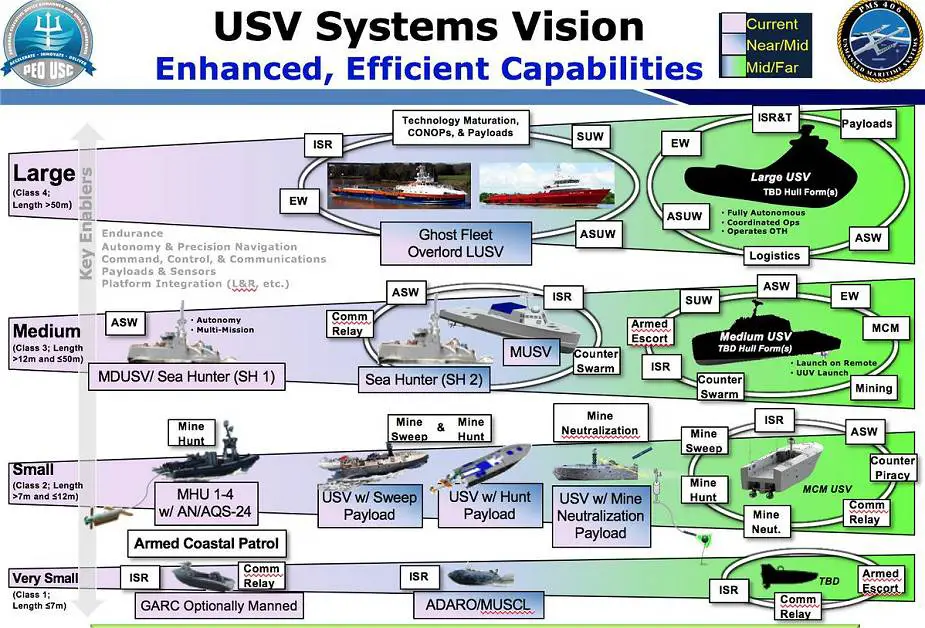According to a contract released by the U.S. DoD (Department of Defense) on September 4, 2020, Huntington Ingalls Inc., Pascagoula, Mississippi; Lockheed Martin Corp., Baltimore, Maryland; Bollinger Shipyards Lockport LLC, Lockport, Louisiana; Marinette Marine Corp., Marinette, Wisconsin; Gibbs & Cox Inc., Arlington, Virginia; and Austal USA LLC, Mobile, Alabama, are each being awarded a firm-fixed price contract for studies of a Large Unmanned Surface Vessel with a combined value across all awards of $41,985,112.
According to a contract released by the U.S. DoD (Department of Defense) on September 4, 2020, Huntington Ingalls Inc., Pascagoula, Mississippi; Lockheed Martin Corp., Baltimore, Maryland; Bollinger Shipyards Lockport LLC, Lockport, Louisiana; Marinette Marine Corp., Marinette, Wisconsin; Gibbs & Cox Inc., Arlington, Virginia; and Austal USA LLC, Mobile, Alabama, are each being awarded a firm-fixed price contract for studies of a Large Unmanned Surface Vessel with a combined value across all awards of $41,985,112.
Follow Navy Recognition on Google News at this link
 U.S. Navy USV Unmanned Surface Vessel Systems Vision. (Picture source U.S. Navy)
U.S. Navy USV Unmanned Surface Vessel Systems Vision. (Picture source U.S. Navy)
The U.S. Navy in FY2021 and beyond wants to develop and procure three types of large unmanned vehicles (UVs). These large UVs are called Large Unmanned Surface Vehicles (LUSVs), Medium Unmanned Surface Vehicles (MUSVs), and Extra-Large Unmanned Undersea Vehicles (XLUUVs). The Navy is requesting $579.9 million in FY2021 research and development funding for these large UVs and their enabling technologies.
The U.S. Navy wants to acquire these large UVs as part of an effort to shift the Navy to a more distributed fleet architecture. Compared to the current fleet architecture, this more distributed architecture is to include proportionately fewer large surface combatants (i.e., cruisers and destroyers), proportionately more small surface combatants (i.e., frigates and Littoral Combat Ships), and the addition of significant numbers of large UVs.
The U.S. Navy wants to employ accelerated acquisition strategies for procuring these large UVs, so as to get them into service more quickly. The Navy’s desire to employ these accelerated acquisition strategies can be viewed as an expression of the urgency that the Navy attaches to fielding large UVs for meeting future military challenges from countries such as China.
The U.S. Navy wants LUSVs to be capable of operating with human operators in the loop,21 or semi-autonomously (with human operators on the loop),22 or fully autonomously, and to be capable of operating either independently or in conjunction with manned surface combatants. Although referred to as UVs, LUSVs might be more accurately described as optionally or lightly manned ships, because they might sometimes have a few onboard crew members, particularly in the nearer term as the Navy works out LUSV enabling technologies and operational concepts.23 LUSVs are to feature both built-in capabilities and an ability to accept modular payloads, and are to use existing Navy sensors and weapon launchers.







